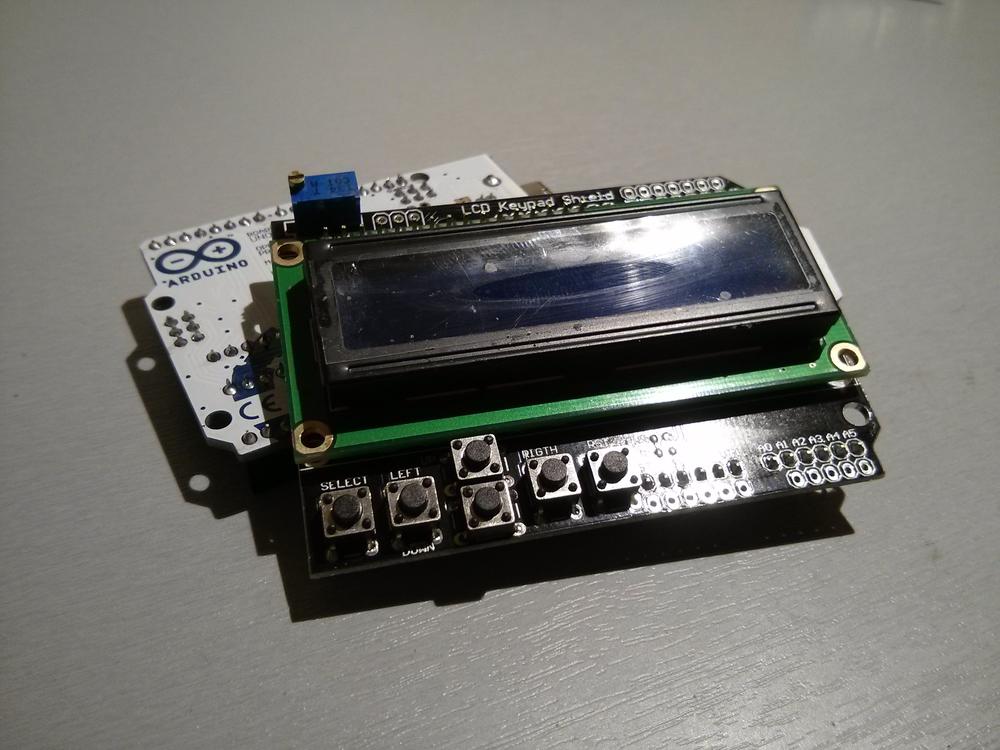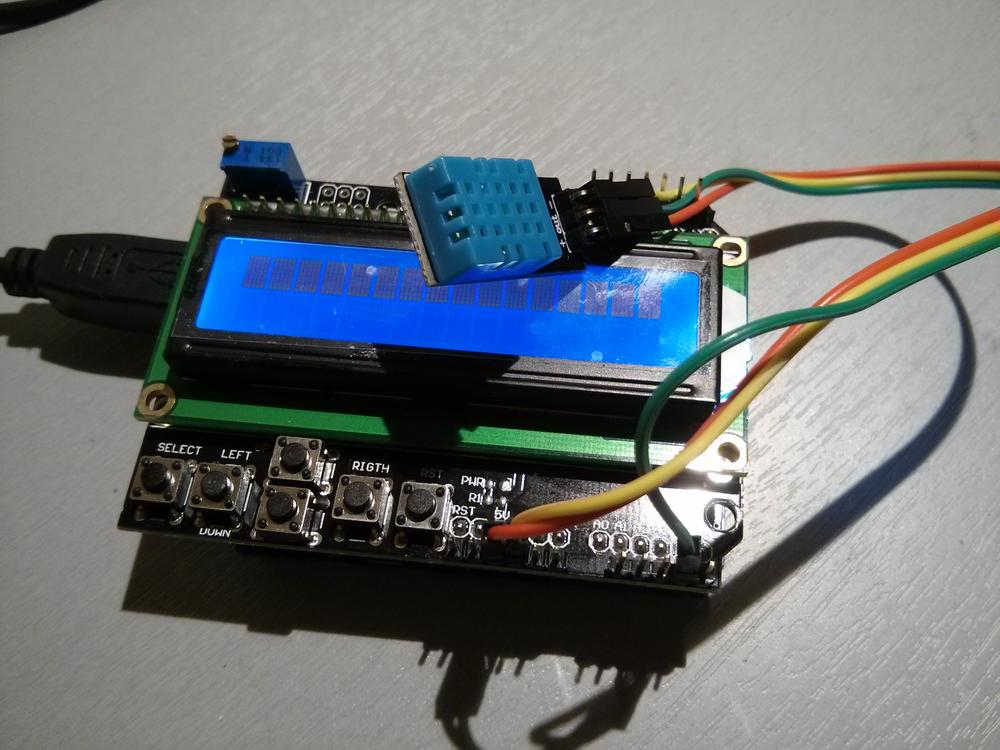Nawiązując do nowej funkcji nettempa, czyli obsługi czujników wilgotności DHT11, musiałem sobie zbudować tester takich czujników. Najlepiej na Arduino, więc zobaczcie jak to zrobiłem.
Arduino i LCD 2×16 shield to fajna sprawa, dzięki takim kanapkom można łatwo i fajnie ożywić swój projekt. Ja dołączyłem jeszcze do tego czujnik temperatury i wilgotności DHT11.
Hardware jest ale potrzeby był jeszcze program dla Arduino. Trochę pogooglałem i dopiero po jakimś czasie znalazłem fajny wsad który dobrze działa z DHT11 i odczytuje go co dwie sekundy bez błędów. Link do wątku na forum arduino. A ja go trochę zmodyfikowałem dodając obsługę LCD shielda, tak aby wyświetlał wyniki w dwóch liniach. Naprawdę nic trudnego. Kod poniżej.
/* DHT11 Example Sketch Code for reading the sensor without delay on your program! Example Code by: Nick Athanasoulas Date: 27/5/2012 FUNCTION: It reads the sensor every 2 seconds without delays. The user can also use the temperature and humidity values directly as an integer and compare it to other values without making new arrays. Date; 07/12/2013 add LCD2x16 techfreak.pl */ #include <LiquidCrystal.h> #define DHT11_PIN 4 // ADC0 Define the ANALOG Pin connected to DHT11 Sensor int temp1[3]; //Temp1, temp2, hum1 & hum2 are the final integer values that you are going to use in your program. int temp2[3]; // They update every 2 seconds. int hum1[3]; int hum2[3]; byte read_dht11_dat() { byte i = 0; byte result=0; for(i=0; i< 8; i++){ while(!(PINC & _BV(DHT11_PIN))); // wait for 50us delayMicroseconds(30); if(PINC & _BV(DHT11_PIN)) result |=(1<<(7-i)); while((PINC & _BV(DHT11_PIN))); // wait '1' finish } return result; } long dht11delay_previousMillis = 0; // will store last time LED was updated long dht11delay_interval = 1000; // dht11delay_interval at which to blink (milliseconds) // initialize the library with the numbers of the interface pins //LiquidCrystal lcd(12, 11, 5, 4, 3, 2); LiquidCrystal lcd(8, 9, 4, 5, 6, 7); void setup() { DDRC |= _BV(DHT11_PIN); PORTC |= _BV(DHT11_PIN); // set up the LCD's number of columns and rows: lcd.begin(16, 2); Serial.begin(9600); Serial.println("DHT11 without delay"); Serial.println("Example code by: Nick Athanasoulas"); Serial.println("Ready"); delay(1000); } void loop() { // set the cursor to column 0, line 1 // (note: line 1 is the second row, since counting begins with 0): lcd.setCursor(0, 1); // print the number of seconds since reset: //lcd.print(millis()/1000); unsigned long dht11delay_currentMillis = millis(); if(dht11delay_currentMillis - dht11delay_previousMillis > dht11delay_interval) { // save the last time you blinked the LED dht11delay_previousMillis = dht11delay_currentMillis; byte dht11_dat[5]; byte dht11_in; byte i; // start condition // 1. pull-down i/o pin from 18ms PORTC &= ~_BV(DHT11_PIN); delay(18); PORTC |= _BV(DHT11_PIN); delayMicroseconds(40); DDRC &= ~_BV(DHT11_PIN); delayMicroseconds(40); dht11_in = PINC & _BV(DHT11_PIN); if(dht11_in){ lcd.println("dht11 start condition 1 not met"); return; } delayMicroseconds(80); dht11_in = PINC & _BV(DHT11_PIN); if(!dht11_in){ lcd.println("dht11 start condition 2 not met"); return; } delayMicroseconds(80); // now ready for data reception for (i=0; i<5; i++) dht11_dat[i] = read_dht11_dat(); DDRC |= _BV(DHT11_PIN); PORTC |= _BV(DHT11_PIN); byte dht11_check_sum = dht11_dat[0]+dht11_dat[1]+dht11_dat[2]+dht11_dat[3]; // check check_sum if(dht11_dat[4]!= dht11_check_sum) { lcd.println("DHT11 checksum error"); } lcd.setCursor(0, 0); temp1[0]=dht11_dat[2]; temp2[0]=dht11_dat[3]; lcd.print("Temp: "); lcd.print(temp1[0]); lcd.print("."); lcd.print(temp2[0]); lcd.print(" C"); // lcd.print(" "); lcd.setCursor(1, 1); hum1[0]=dht11_dat[0]; hum2[0]=dht11_dat[1]; lcd.print("Humidity: "); lcd.print(hum1[0]); lcd.print("."); lcd.print(hum2[0]); lcd.println("%"); } } // END OF CODE
A poniżej odczyty już na LCD.
Wygląda na to że odczyty są poprawne. A wiec szukam dalej jak usprawnić obsługę w Raspberry Pi i nettemp.


